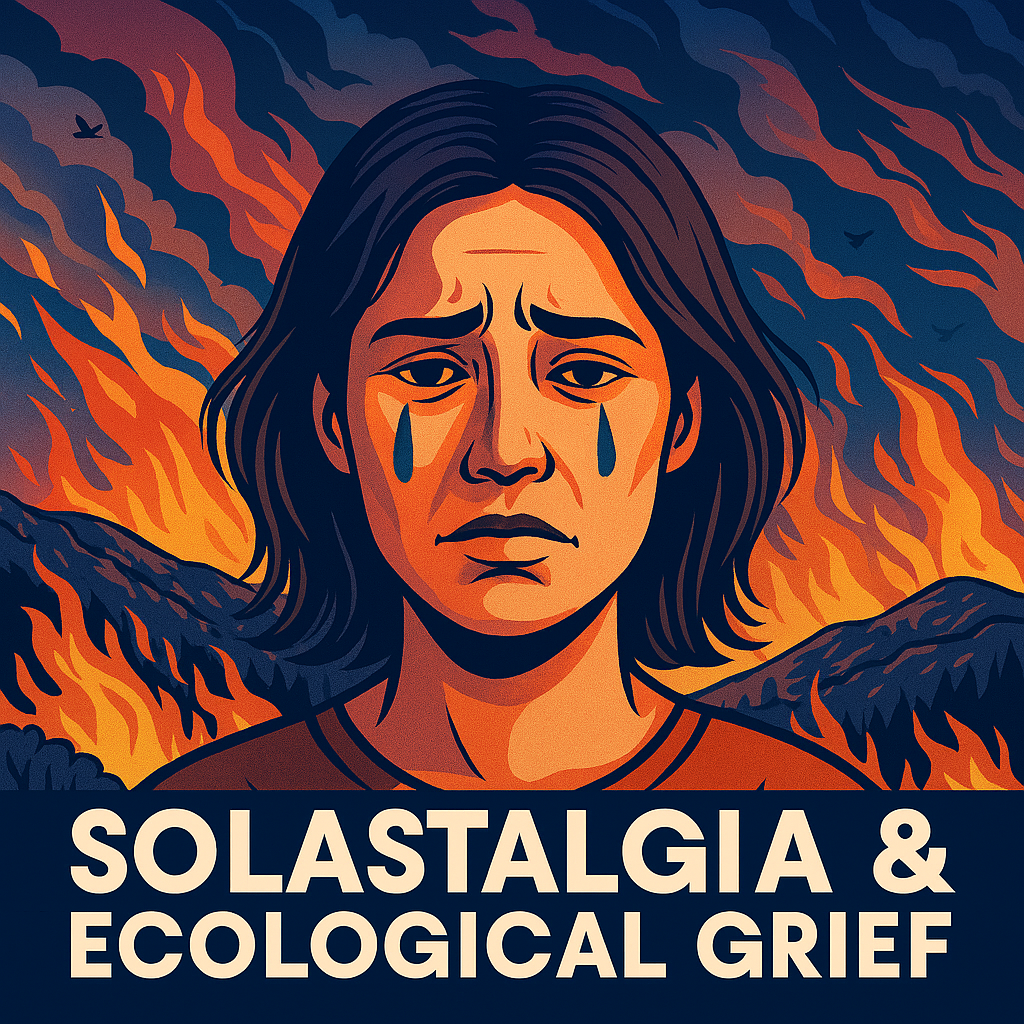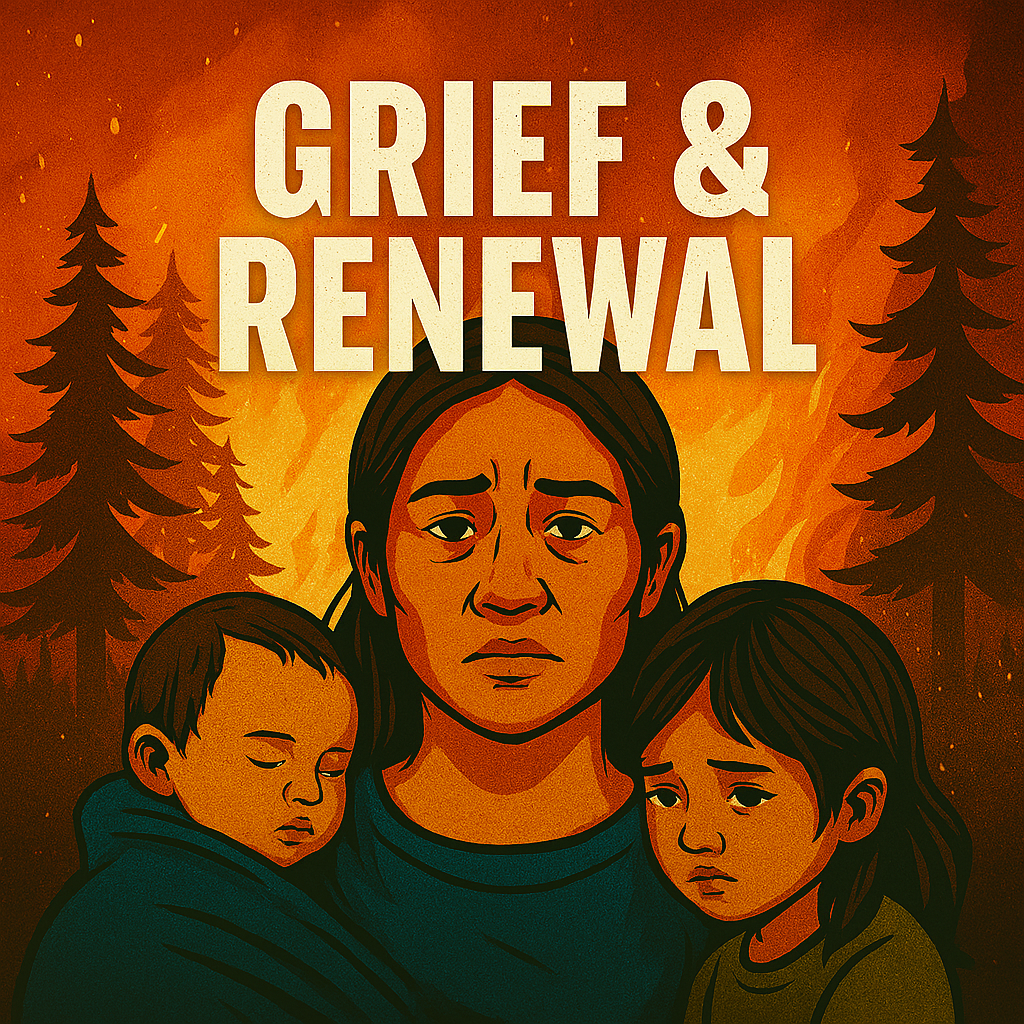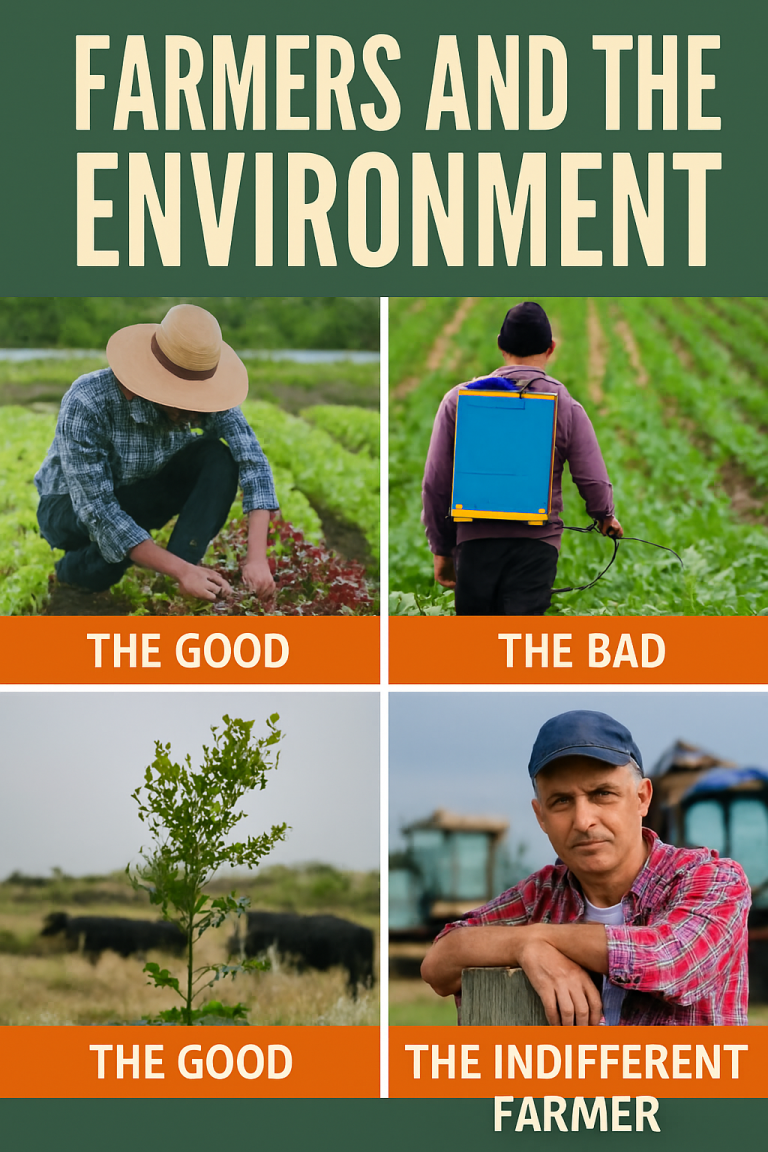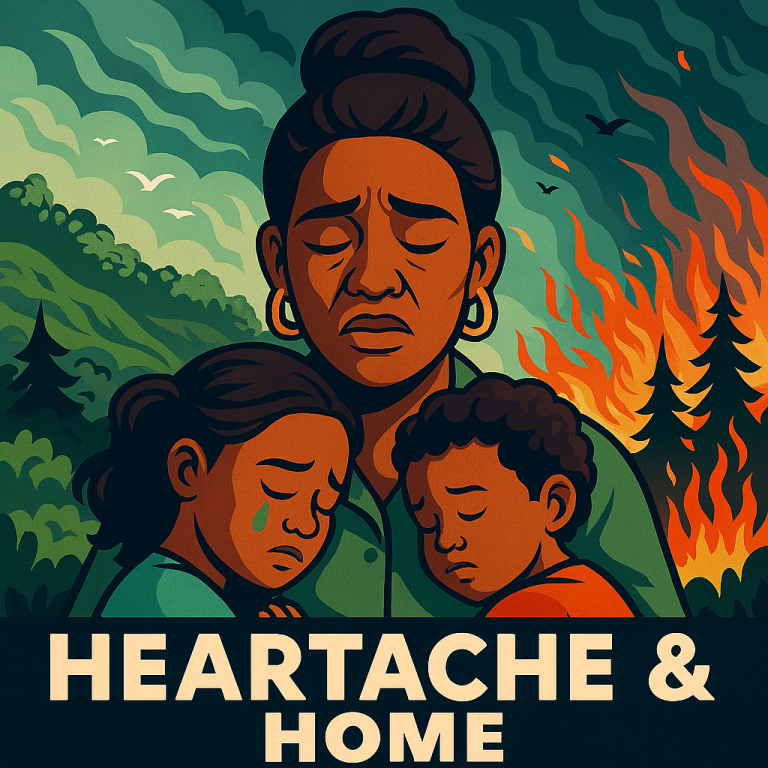
Solastalgia And Ecological Grief
Understanding Emotional Responses To Environmental Change
Mapping Psychological Landscapes Of Climate Disruption
Solastalgia and ecological grief are emerging emotional phenomena tied to environmental degradation and climate change. Unlike nostalgia, which reflects longing for a distant place or time, solastalgia describes the distress experienced when one’s home environment undergoes transformation. Ecological grief expands this concept to encompass mourning for lost ecosystems, species, and landscapes. These emotional states are not abstract—they are deeply felt, often chronic, and increasingly common in communities facing climate disruption.
The psychological toll of wildfires, droughts, floods, and biodiversity loss is profound, especially when these events alter familiar places. People report feelings of helplessness, sadness, and disconnection as their surroundings change. These emotions are not pathological—they are rational responses to real loss. Recognising solastalgia and ecological grief allows for more compassionate climate discourse. It also opens pathways for healing, adaptation, and collective resilience.
Climate Change And Emotional Displacement
Linking Environmental Loss To Psychological Distress
Climate change is not only a physical crisis—it is a psychological one. As landscapes shift due to rising temperatures, sea level rise, and extreme weather, individuals experience emotional displacement. Solastalgia arises when the environment that once offered comfort becomes unfamiliar or hostile. This can occur gradually, through desertification or deforestation, or suddenly, through disasters like hurricanes.
Ecological grief often follows, as people mourn the loss of species, ecosystems, and cultural connections to land. These emotions are particularly acute in Indigenous communities, where land is central to identity and tradition. Urban populations also feel solastalgia when green spaces vanish or air quality deteriorates. The emotional impact is compounded by a sense of powerlessness and lack of control. Psychological responses include anxiety, depression, and existential dread. Addressing these emotions requires acknowledging their legitimacy and integrating them into climate policy and mental health frameworks.
| Environmental Trigger | Emotional Response | Affected Communities |
|---|---|---|
| Deforestation | Solastalgia | Rural, Indigenous |
| Wildfires | Ecological Grief | Suburban, Farming |
| Sea Level Rise | Displacement | Coastal, Island |
| Biodiversity Loss | Mourning | Conservationists |
| Urban Expansion | Alienation | City Residents |
Origins Of Solastalgia As A Concept
Tracing The Evolution Of Environmental Mourning
The term solastalgia is quite a new idea and was coined by Australian philosopher Glenn Albrecht in 2003. It combines “solace” and “nostalgia” to describe the pain of losing one’s environmental home while still living in it. Unlike traditional grief, solastalgia is ongoing and tied to place-based change. It emerged from studies of communities affected by mining and land degradation in New South Wales. Albrecht observed that residents felt deep sadness and anxiety as their familiar landscapes were altered.
This concept resonated globally, especially in regions facing rapid ecological transformation. Ecological grief builds on solastalgia by encompassing broader losses—species extinction, ecosystem collapse, and climate-induced cultural erosion. These ideas have gained traction in psychology, sociology, and environmental ethics. They challenge the notion that climate change is purely technical or economic. Instead, they highlight its emotional and existential dimensions. Understanding these concepts helps frame climate action as both ecological and psychological care.
- Solastalgia is distinct from nostalgia because it occurs without physical displacement.
- It reflects a loss of identity, belonging, and emotional safety tied to place.
- Ecological grief includes mourning for non-human entities and systems.
- Both concepts validate emotional responses to environmental change.
- They are increasingly recognised in climate justice and mental health discourse.
- Solastalgia is common in communities near extractive industries.
- Ecological grief affects conservationists and scientists witnessing biodiversity loss.
- These emotions can motivate activism and ecological restoration.
- They also require support systems and therapeutic recognition.
- Integrating them into climate narratives fosters empathy and resilience.
Psychological Symptoms Of Environmental Grief
Identifying Mental Health Impacts Of Climate Disruption
Solastalgia and ecological grief manifest in diverse psychological symptoms. Individuals may experience an interesting feeling of persistent sadness, anxiety, irritability, and sleep disturbances. These emotions often correlate with environmental triggers—loss of green space, pollution, or climate disasters. Children and adolescents are particularly vulnerable, as they face uncertain futures.
Elders may mourn the disappearance of landscapes they knew intimately. Mental health professionals report increased cases of climate-related distress, especially in frontline communities. These symptoms are not isolated—they intersect with socioeconomic stressors, displacement, and cultural loss. Ecological grief can also lead to moral injury, as individuals feel complicit in environmental harm. Solastalgia may cause withdrawal, apathy, or obsessive rumination. Recognising these symptoms is crucial for early intervention and support. Mental health frameworks must evolve to include climate emotions. This includes training clinicians, developing community programs, and integrating ecological awareness into therapy.
| Symptom | Description | Common Triggers |
|---|---|---|
| Anxiety | Persistent worry about environmental loss | Climate news, disasters |
| Depression | Sadness linked to ecological degradation | Habitat destruction |
| Sleep Disturbance | Insomnia due to environmental stress | Noise, heat, displacement |
| Moral Injury | Guilt over ecological harm | Consumption, policy failure |
| Disconnection | Feeling alienated from nature | Urbanisation, pollution |

Cultural Dimensions Of Solastalgia
Exploring Place-Based Identity And Emotional Loss
Solastalgia is deeply cultural. It reflects the emotional bond between people and their environments. In Indigenous cultures, land is not just a resource—it is kin, history, and spirit. Environmental degradation disrupts these relationships, causing grief and disorientation. Solastalgia also affects migrant communities who lose access to ancestral landscapes. Urban residents may mourn the disappearance of parks, rivers, or familiar seasons. Cultural rituals tied to land—harvests, ceremonies, storytelling—become fragmented.
This loss impacts identity, belonging, and intergenerational continuity. Ecological grief is often compounded by historical trauma and systemic marginalisation. Recognising cultural dimensions of solastalgia fosters inclusive climate responses. It also validates diverse emotional experiences and healing practices. Cultural resilience can mitigate ecological grief through storytelling, art, and land stewardship. These practices reconnect people to place and purpose. They offer pathways for emotional restoration and ecological regeneration.
- Indigenous communities experience solastalgia as cultural dislocation.
- Migrants may feel ecological grief for lost homelands.
- Urban solastalgia arises from rapid development and green space loss.
- Cultural rituals help process environmental grief.
- Storytelling preserves ecological memory and resilience.
- Art expresses solastalgic emotions and fosters dialogue.
- Land stewardship restores emotional and ecological balance.
- Cultural frameworks offer non-clinical healing pathways.
- Recognising cultural grief enhances climate justice.
- Inclusive policies must honour place-based emotional ties.
Youth Perspectives On Climate Loss
Navigating Solastalgia In A Generation Without A Stable Climate
Young people today are growing up in a world marked by environmental instability. Unlike previous generations, they inherit a planet already altered by climate change. This reality shapes their emotional development, worldview, and sense of agency. Solastalgia manifests in youth as a deep unease about the future and a longing for ecological stability they never experienced. Many report feelings of betrayal, anxiety, and grief over the loss of biodiversity and climate predictability.
School strikes, climate protests, and youth-led movements are expressions of this emotional burden. Ecological grief among youth is often compounded by intergenerational conflict and institutional inaction. Despite this, young people also demonstrate remarkable resilience and creativity. They use art, storytelling, and activism to process grief and demand change. Supporting youth through solastalgia requires listening, validating their emotions, and co-creating solutions that honour their vision.
| Age Group | Common Emotional Themes | Coping Strategies Used |
|---|---|---|
| Children (6–12) | Confusion, fear, sadness | Nature play, storytelling |
| Teens (13–18) | Anxiety, anger, urgency | Activism, peer support |
| Young Adults | Grief, disillusionment | Art, protest, community action |
| Students | Overwhelm, eco-fatigue | Climate clubs, journaling |
| Youth Leaders | Hope, responsibility | Campaigning, public speaking |
Ecological Grief In Scientific And Conservation Communities
Bearing Witness To Loss In Professional Practice
Scientists, ecologists, and conservationists often experience ecological grief in the course of their work. These professionals are on the frontlines of documenting species extinction, habitat collapse, and ecosystem degradation. Their grief is unique—it is informed by data, long-term observation, and a deep understanding of what is being lost. Many report feelings of helplessness, burnout, and moral distress.
The emotional toll of witnessing anything bad like environmental decline can lead to compassion fatigue and professional withdrawal. Yet, this grief also fuels dedication and advocacy. Scientists are increasingly speaking out about their emotional responses, challenging the myth of detached objectivity. Ecological grief in these communities is both personal and collective. It is shared through field notes, conferences, and informal networks. Recognising and supporting emotional resilience in scientific fields is essential for long-term sustainability. This includes peer support, institutional acknowledgment, and integrating emotional literacy into training.
- Ecologists often grieve the loss of species they have studied for decades.
- Marine biologists report sorrow over coral bleaching and ocean acidification.
- Botanists mourn the disappearance of native plant communities.
- Conservationists feel guilt when restoration efforts fail.
- Field researchers experience trauma from witnessing habitat destruction.
- Emotional suppression in science can lead to burnout.
- Peer support groups help process ecological grief.
- Journaling and storytelling are therapeutic tools.
- Institutions are beginning to recognise emotional labour in conservation.
- Grief can deepen commitment to ecological protection.
Solastalgia In Urban Environments
Emotional Impacts Of Green Space Loss And Climate Stress
Urban residents are not immune to solastalgia. As cities expand and densify, natural spaces often disappear. Tree cover, wetlands, and community gardens are replaced by concrete and infrastructure. This transformation affects mental health, especially in communities with limited access to nature. Solastalgia in cities is linked to rising temperatures, air pollution, and the loss of seasonal rhythms. People report feeling disconnected, anxious, and emotionally fatigued. Urban solastalgia is also shaped by socioeconomic inequality—low-income areas often suffer the greatest environmental degradation.
Green spaces provide more than aesthetics—they offer psychological refuge, social connection, and ecological education. Their loss erodes community cohesion and emotional well-being. Addressing urban solastalgia requires equitable access to nature, participatory planning, and climate-adaptive design. It also involves recognising the emotional value of everyday landscapes. Urban resilience is not just about infrastructure—it is about emotional and ecological integrity.
| Urban Change | Emotional Impact | Affected Populations |
|---|---|---|
| Tree Removal | Loss of shade, sadness | Elderly, children |
| Park Closures | Isolation, frustration | Families, youth |
| Heat Islands | Fatigue, irritability | Low-income communities |
| Air Pollution | Anxiety, disconnection | Asthmatics, outdoor workers |
| Seasonal Shifts | Disorientation, grief | Long-term residents |
Rituals And Practices For Processing Ecological Grief
Creating Space For Emotional And Ecological Restoration
Processing solastalgia and ecological grief requires intentional practices. Rituals, both personal and communal, help individuals acknowledge loss and reconnect with meaning. These practices vary across cultures and contexts. Some communities hold mourning ceremonies for lost species or damaged landscapes. Others create art, music, or gardens as acts of remembrance and renewal. Writing, meditation, and nature walks are also powerful tools. These rituals do not erase grief—they honour it.
They transform sorrow into connection, and despair into care. Ecological grief is not a weakness—it is a sign of deep relational awareness. Creating space for these emotions fosters resilience and solidarity. It also challenges the cultural tendency to suppress grief or treat it as pathology. Healing from solastalgia involves both inner reflection and collective action. Communities that grieve together can also regenerate together. These practices are seeds of ecological and emotional repair.
- Mourning rituals acknowledge ecological loss with dignity.
- Art and music express grief beyond words.
- Community gardens restore connection to land.
- Story circles allow shared emotional processing.
- Nature walks rebuild sensory and emotional bonds.
- Writing helps articulate complex feelings.
- Meditation fosters presence and acceptance.
- Ceremonies for extinct species honour memory.
- Ecotherapy integrates nature into healing.
- Rituals build emotional literacy and ecological care.

Solastalgia In Agricultural Communities
Emotional Toll Of Land Degradation And Climate Variability
Farmers and rural communities often experience solastalgia as their land becomes less productive or unrecognisable. Droughts, floods, soil erosion, and shifting seasons disrupt traditional farming practices and cultural rhythms. These changes affect not only livelihoods but also emotional connection to the land. Many farmers report feelings of grief, frustration, and helplessness as they witness the decline of landscapes they have stewarded for generations.
Solastalgia in agriculture is compounded by economic stress, policy uncertainty, and generational pressure. Elders mourn the loss of ancestral knowledge, while younger farmers struggle to adapt. The emotional toll includes burnout, depression, and withdrawal from community life. Yet, some respond with innovation—regenerative agriculture, permaculture, and land restoration offer pathways to healing. Recognising solastalgia in farming communities is essential for holistic rural support. It validates emotional experience and encourages ecological renewal.
| Agricultural Stressor | Emotional Impact | Coping Response |
|---|---|---|
| Drought | Despair, anxiety | Water conservation, prayer |
| Soil Erosion | Grief, loss of identity | Regenerative practices |
| Flooding | Trauma, helplessness | Community rebuilding |
| Crop Failure | Shame, economic stress | Diversification, support |
| Season Shifts | Disorientation, sadness | Adaptive planting calendars |
Ecological Grief And Species Extinction
Mourning The Disappearance Of Non-Human Kin
Ecological grief is often triggered by the extinction of species and collapse of ecosystems. These losses are not abstract—they represent the disappearance of unique life forms, relationships, and ecological functions. People grieve animals they grew up with, plants that shaped cultural practices, and landscapes that held memory. Conservationists, Indigenous communities, and nature lovers feel this grief acutely.
It is a mourning for the more-than-human world, for kinship and interdependence. Species extinction also evokes existential questions—what does it mean to live in a diminished world? Ecological grief can lead to activism, storytelling, and memorialisation. Some communities hold ceremonies for extinct species, others create art or archives to honour their memory. This grief is not sentimental—it is ecological awareness. It reflects love, responsibility, and a desire to protect what remains. Recognising this grief helps build ethical climate narratives.
- Species extinction is a profound emotional loss.
- People mourn animals they never met but deeply valued.
- Ecological grief includes sorrow for lost biodiversity.
- Ceremonies honour extinct species and their legacy.
- Art memorialises ecological disappearance.
- Archives preserve memory and ecological knowledge.
- Grief motivates conservation and protection.
- Extinction evokes existential and ethical reflection.
- Ecological grief deepens environmental empathy.
- It fosters interspecies solidarity and care.
Solastalgia And Forced Migration
Emotional Consequences Of Climate Displacement
Climate change is increasingly driving forced migration. Rising seas, desertification, and extreme weather displace millions from their homes. Solastalgia in this context is acute—it reflects the pain of losing place, culture, and identity. Displaced individuals often experience grief, disorientation, and trauma. Ecological grief compounds this, as migrants mourn the loss of familiar landscapes and community ties. Refugee camps, urban resettlement, and border policies rarely address emotional needs.
Solastalgia among climate migrants is often invisible, yet deeply felt. It affects mental health, social cohesion, and adaptation capacity. Recognising this grief is essential for humane climate policy. It requires integrating emotional support into relocation programs, honouring cultural continuity, and fostering community resilience. Climate migration is not just logistical—it is emotional and symbolic. Solastalgia must be addressed alongside shelter, food, and employment.
| Displacement Cause | Emotional Experience | Support Needed |
|---|---|---|
| Sea Level Rise | Grief, loss of home | Cultural continuity programs |
| Desertification | Disconnection, sadness | Ecological restoration |
| Floods and Storms | Trauma, anxiety | Mental health services |
| Wildfires | Shock, mourning | Community rebuilding |
| Resource Scarcity | Frustration, despair | Sustainable development |
Ecological Grief In Art And Literature
Creative Expressions Of Environmental Mourning
Art and literature are powerful mediums for expressing solastalgia and ecological grief. Through poetry, painting, film, and storytelling, individuals process environmental loss and share emotional truths. These works evoke empathy, awareness, and reflection. They challenge denial and inspire action. Artists often depict disappearing landscapes, extinct species, and climate anxiety. Writers explore themes of memory, mourning, and ecological ethics. These creative expressions validate grief and offer communal resonance.
They also preserve ecological memory and cultural continuity. Art can be a form of resistance, healing, and ecological care. It transforms grief into beauty and connection. Literature helps articulate complex emotions and envision alternative futures. Recognising ecological grief in creative work fosters emotional literacy and climate engagement. It also honours the role of artists as emotional cartographers of the Anthropocene.
- Poetry captures the nuance of solastalgia.
- Visual art depicts ecological loss and resilience.
- Film explores climate grief and adaptation.
- Novels reflect emotional landscapes of change.
- Music channels mourning and hope.
- Storytelling preserves ecological memory.
- Art fosters empathy and awareness.
- Literature offers emotional vocabulary for grief.
- Creative work inspires ecological action.
- Artists are emotional witnesses of climate change.
Climate Justice And Emotional Equity
Addressing Unequal Burdens Of Solastalgia
Solastalgia and ecological grief are not experienced equally. Marginalised communities often bear the brunt of environmental degradation while having the least access to emotional support. Climate justice demands recognition of these disparities. Indigenous peoples, low-income groups, and communities of colour face compounded grief—ecological, cultural, and systemic.
Their emotional responses are often dismissed or pathologised. Solastalgia in these contexts is tied to histories of displacement, colonisation, and environmental racism. Addressing emotional equity means listening to frontline voices and validating their grief. It also means resourcing community-led healing and adaptation. Climate policy must integrate emotional justice alongside mitigation and adaptation. This includes funding for mental health, cultural preservation, and ecological restoration. Emotional equity is not a luxury—it is a necessity for just transition. Solastalgia reveals the emotional fault lines of climate injustice.
| Community Affected | Emotional Burden | Justice-Oriented Response |
|---|---|---|
| Indigenous Peoples | Cultural grief, solastalgia | Land rights, cultural revival |
| Low-Income Residents | Urban solastalgia, anxiety | Green infrastructure, access |
| Climate Migrants | Displacement grief | Dignified relocation, support |
| Youth In Marginalised Areas | Eco-anxiety, despair | Education, empowerment |
| Rural Communities | Land loss, solastalgia | Regenerative agriculture, support |
Solastalgia In The Anthropocene
Emotional Landscapes Of A Human-Altered Planet
The Anthropocene is the era of human impact on Earth’s systems. It is also an era of emotional upheaval. Solastalgia and ecological grief are defining psychological experiences of this epoch. They reflect the dissonance between human power and ecological vulnerability. As landscapes change, so do emotional geographies. People feel unmoored, overwhelmed, and morally conflicted.
The Anthropocene challenges traditional notions of place, time, and responsibility. Solastalgia is not just personal—it is planetary. It connects individuals across borders through shared grief and longing. Ecological grief becomes a form of global empathy. These emotions are not signs of weakness—they are signs of awareness. They call for new narratives, ethics, and solidarities. Living in the Anthropocene means learning to grieve and act at once. Solastalgia is a compass for emotional orientation in a shifting world.
- The Anthropocene intensifies emotional responses to environmental change.
- Solastalgia reflects the psychological cost of planetary disruption.
- Ecological grief fosters global empathy and solidarity.
- Emotional awareness is part of ecological literacy.
- Grief can be a catalyst for ethical reflection.
- The Anthropocene requires emotional adaptation.
- Solastalgia connects personal and planetary narratives.
- Emotional resilience is key to climate resilience.
- New rituals and ethics are emerging in response.
- Emotional landscapes shape future ecological action.
Designing For Emotional Resilience
Architecture, Planning, And Ecological Belonging
Built environments can either exacerbate or soothe solastalgia. Urban design, architecture, and planning play critical roles in shaping emotional responses to place. Green infrastructure, biophilic design, and community spaces foster ecological belonging. Conversely, grey infrastructure, displacement, and environmental neglect deepen solastalgia. Emotional resilience can be designed into cities and settlements. This includes access to nature, climate-adaptive materials, and participatory planning.
Architecture becomes a medium for ecological storytelling and healing. Schools, hospitals, and public spaces can reflect environmental care. Design that honours place, memory, and ecology supports emotional well-being. Solastalgia-aware planning integrates aesthetics, function, and emotional intelligence. It also centres community voices and cultural continuity. Designing for emotional resilience is part of climate adaptation. It builds places where people feel safe, connected, and hopeful.
| Design Element | Emotional Benefit | Application Context |
|---|---|---|
| Green Roofs | Cooling, visual relief | Urban housing, schools |
| Community Gardens | Connection, agency | Neighbourhoods, public housing |
| Natural Materials | Sensory grounding | Homes, clinics, libraries |
| Water Features | Calm, memory | Parks, plazas, hospitals |
| Cultural Symbols | Identity, continuity | Public art, signage, buildings |

From Grief To Action
Transforming Solastalgia Into Ecological Commitment
Solastalgia and ecological grief, while painful, can also be transformative. These emotions by accident can reveal what we care about and what we are willing to protect. Grief can become a source of clarity, courage, and connection. Many environmental movements are rooted in love and loss. Solastalgia motivates restoration, conservation, and climate advocacy. It also fosters humility and interdependence. Transforming grief into action requires support, community, and vision. It involves acknowledging pain without being paralysed by it. Emotional honesty strengthens ecological commitment. Solastalgia becomes a bridge between mourning and meaning. It invites people to participate in regeneration, not just resistance. From grief grows a deeper sense of purpose. Ecological care becomes an act of emotional integrity.
- Grief reveals what matters most.
- Solastalgia can inspire ecological stewardship.
- Emotional honesty strengthens climate action.
- Community support transforms despair into agency.
- Rituals and storytelling sustain commitment.
- Grief fosters humility and interdependence.
- Action becomes a form of healing.
- Solastalgia deepens ecological ethics.
- Regeneration is both emotional and ecological.
- From grief grows resilience and resolve.
Conclusion
Honouring Grief As A Pathway To Ecological Renewal
Solastalgia and ecological grief are not pathologies—they are profound responses to a changing world. They reflect love, memory, and responsibility. Recognising these emotions is essential for building resilient, compassionate, and just climate futures. From rural farms to urban parks, from coral reefs to ancestral lands, the emotional landscapes of the Anthropocene are complex and urgent.
Solastalgia invites us to listen—to ourselves, to each other, and to the Earth. Ecological grief calls us to mourn, to remember, and to act. Together, they form an emotional compass for navigating environmental change. Healing is not about returning to the past—it is about restoring relationship and meaning. In honouring grief, we honour life. And in doing so, we begin to regenerate the world we share.
Join The Discussion
Share Your Story, Your Grief, And Your Hope
Have you experienced solastalgia or ecological grief in your own life or community? What landscapes have shaped your emotional world? How do you process environmental loss, and what gives you strength to continue?
#Solastalgia #EcologicalGrief #ClimateEmotions #EmotionalResilience #EnvironmentalJustice #Anthropocene #GriefToAction #PlaceBasedHealing #ClimateCare #PsychologicalEcology



